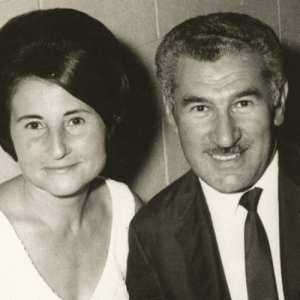Blog
September 19, 2019
Learn the History – Why did Jews not leave Germany when the Nazis came to power?
Our Resident Historian Emeritus Professor Konrad Kwiet explains why the assumption that German Jews didn’t want to leave their country is a myth.

Image: Resident Historian Emeritus Professor Konrad Kwiet. Photograph by Katherine Griffiths.
German Jews who faced Nazi persecution have often been accused of being unwilling to leave their beloved country of birth. From this assumption, they have been portrayed as victims who blindly submitted to their fate, led to their death like lambs to the slaughter. These assumptions of German Jews, however, fall into the realm of historical legend. In fact, the opposite was true.
When in 1933 the National Socialists assumed power, 525,000 Jews – less than one per cent of Germany’s population – experienced the termination of their German-Jewish Lebensgemeinschaft (co-existence). They found themselves at the mercy of a popular dictatorship which offered them a choice between social segregation within a new racial state or expulsion from Germany. They discussed at length the alternatives of home and exile, whether to stay or to leave. A minority left at once: those in danger for political reasons, Communists, Socialists and other Anti-Fascists, Zionists and individuals driven out of their professions. 38,000 Jews sought refuge in exile in 1933; 23,000 in 1934; 20,000 in 1935.
The majority decided to stay. They believed that the Nazi regime might not remain in power for very long; an illusion also shared by many non-Jews at the time. The belief that a rapid return to democracy would restore the German-Jewish co-existence deterred many from leaving Germany and rebuilding their lives in other countries.
It ultimately took a direct threat to their lives to make most German Jews realise that their ties to Germany were no longer a safety blanket. This occurred in November 1938, with the pogrom of Kristallnacht – the Night of Broken Glass. After this event discussion over whether to leave or stay turned to the urgent, panicked cry: “Get out, at all costs!”
By the autumn of 1941 almost 300,000 German Jews had escaped Nazi terror; two thirds of the Jewish population of 1933. There were still 164,000 Jews trapped in Germany; most of whom still intended to leave and were desperately waiting for the arrival of life-saving landing permits and visas. Thousands of applications lay unprocessed on desks in London, Washington and other cities of the “free world” that had already closed their doors to Jewish immigrants.

Photograph by H. H. Friedrich showing the aftermath of Kristallnacht on a Jewish clothing store in Magdeburg, Germany, 1938. SJM Collection.
Dr Konrad Kwiet is Emeritus Professor in German and European Studies at Macquarie University, former chief historian of the Australian war crimes commission (SIU), and longest serving staff member at the Sydney Jewish Museum. He has authored 10 books and over 80 articles, chapters and historical dictionary entries.






What’s On Newsletter
Keep up to date on all Museum events and exhibitions.